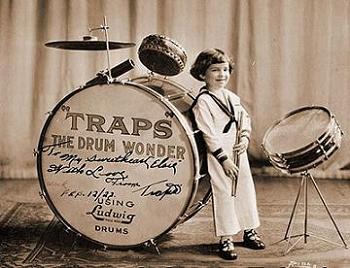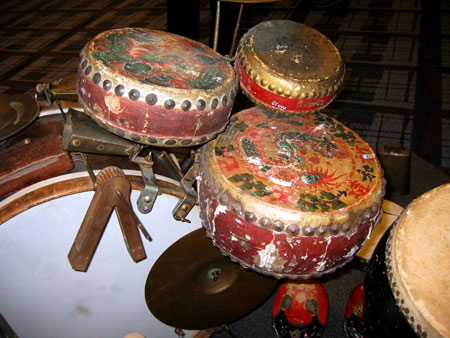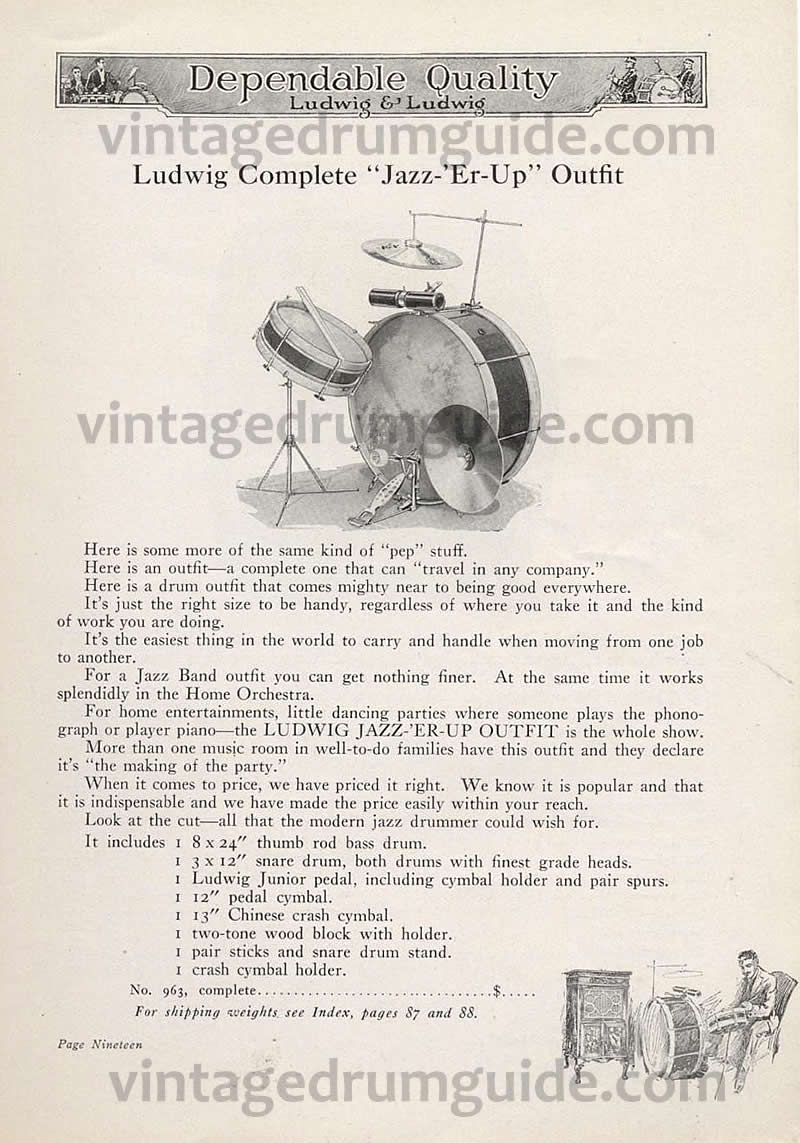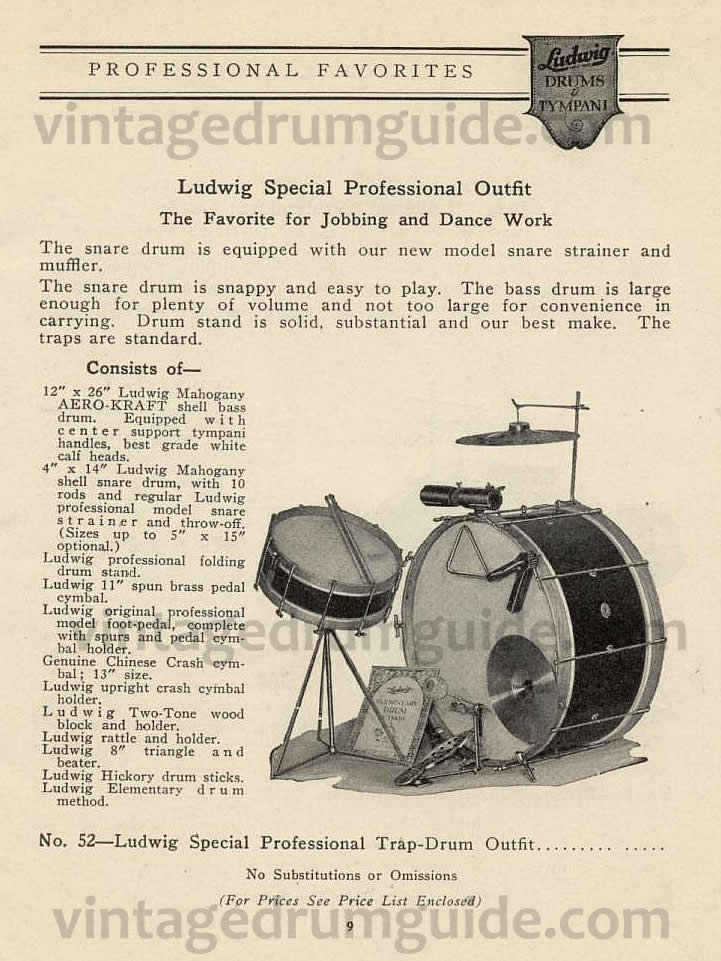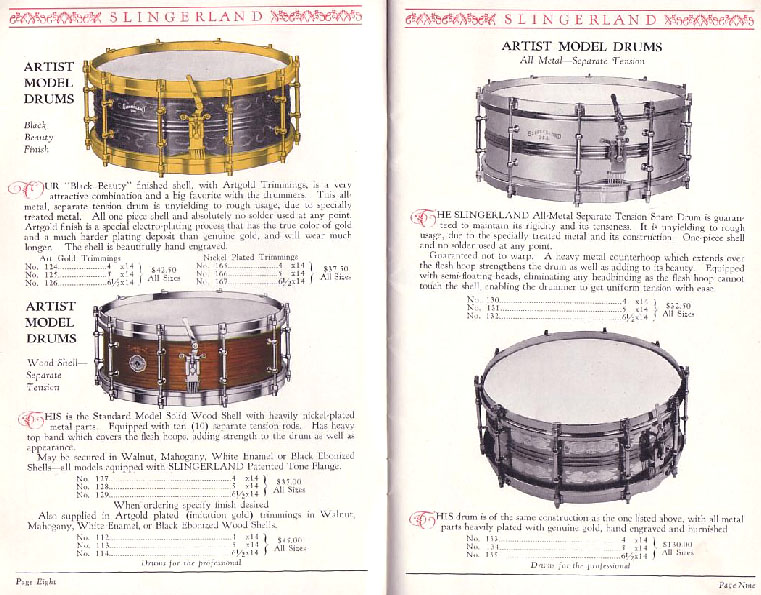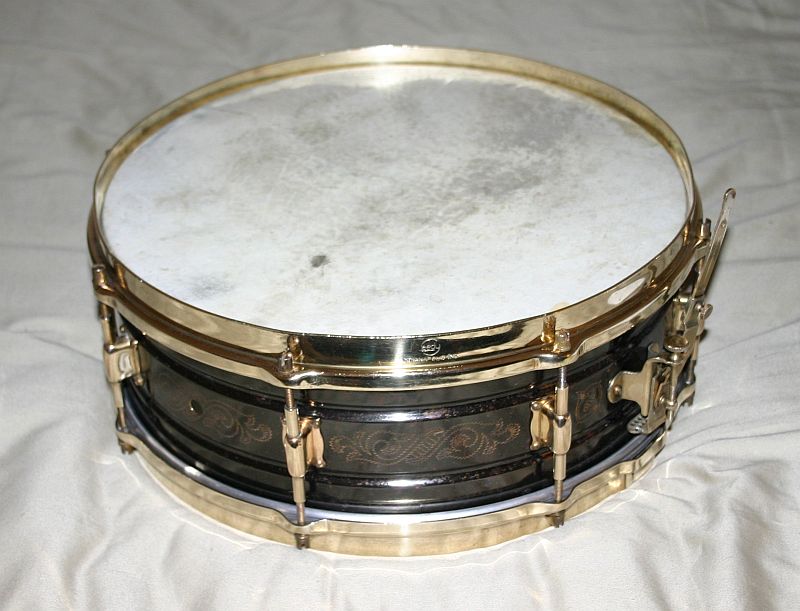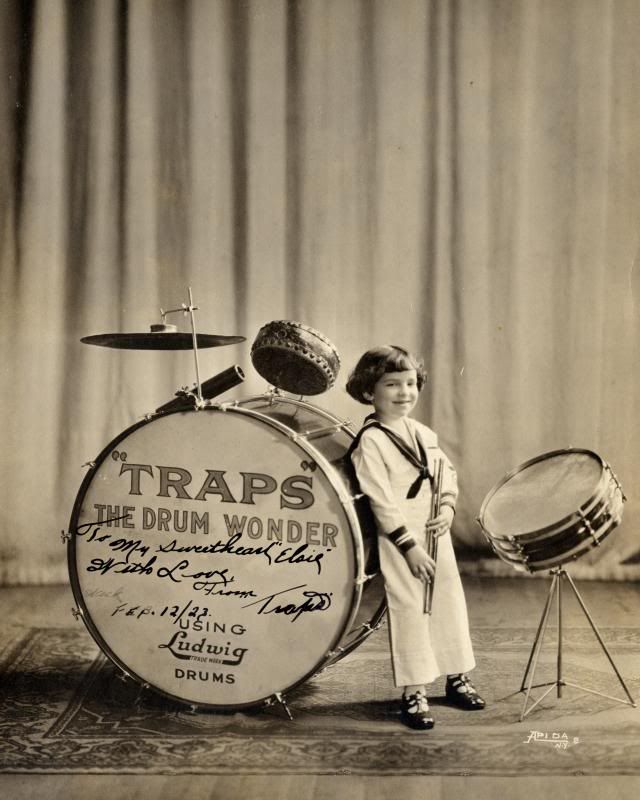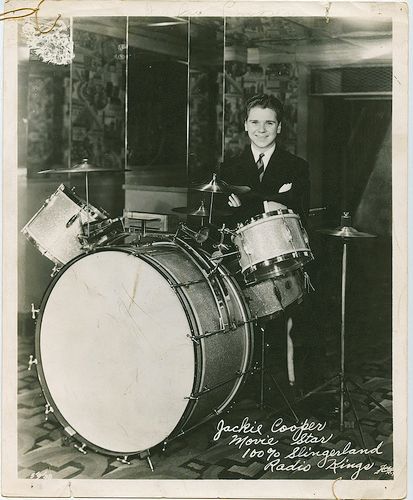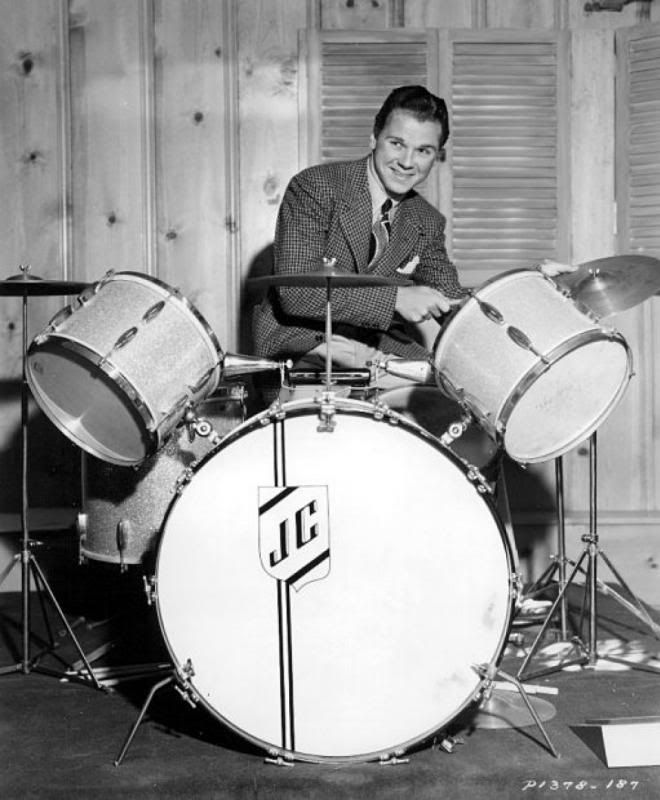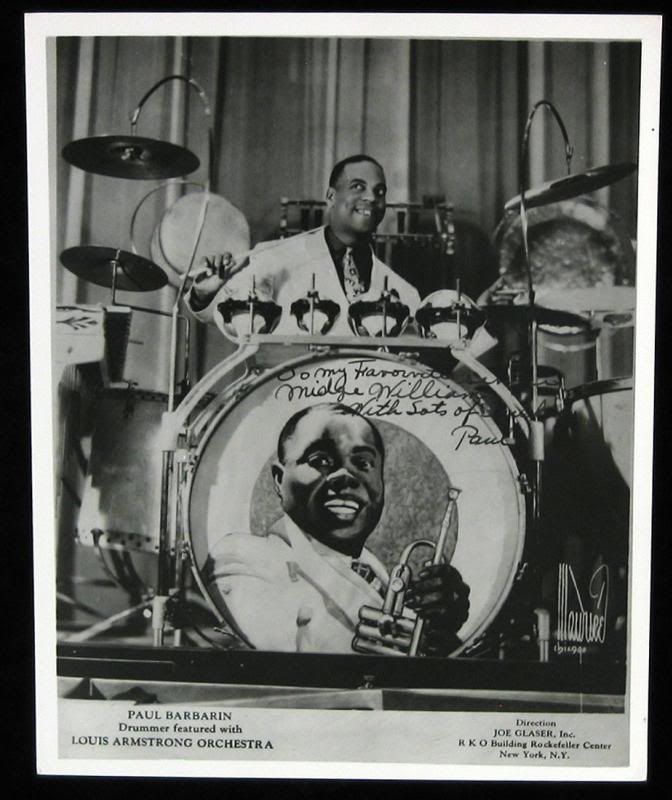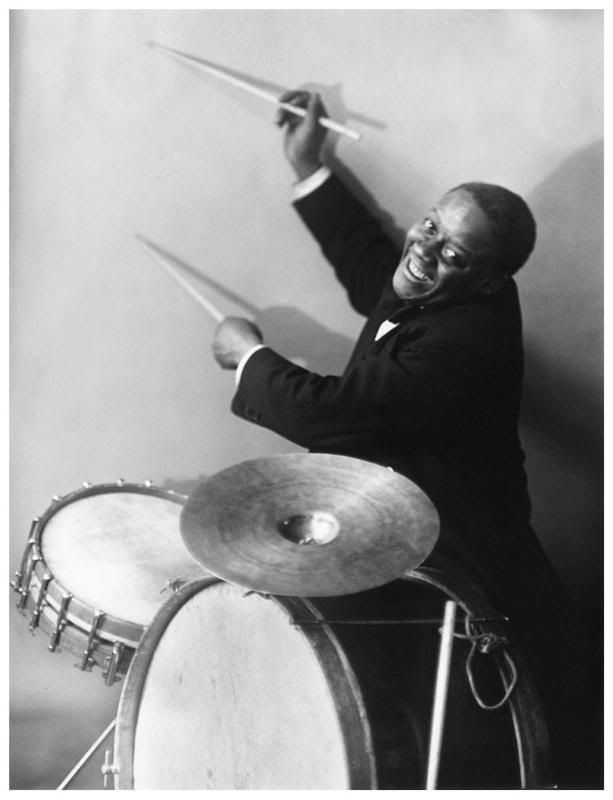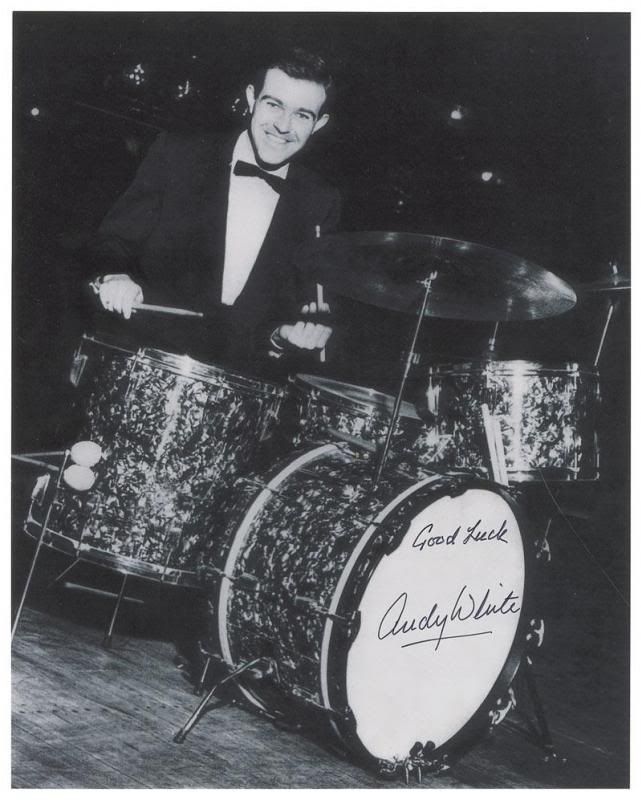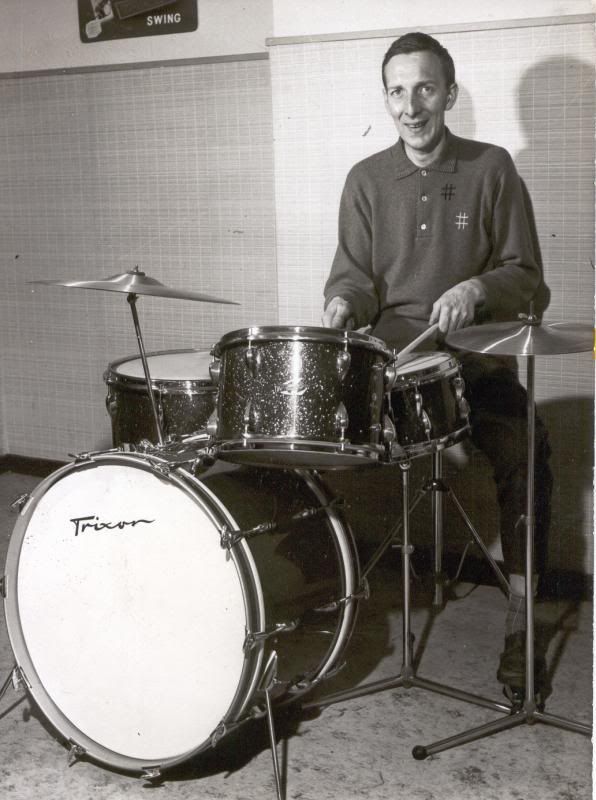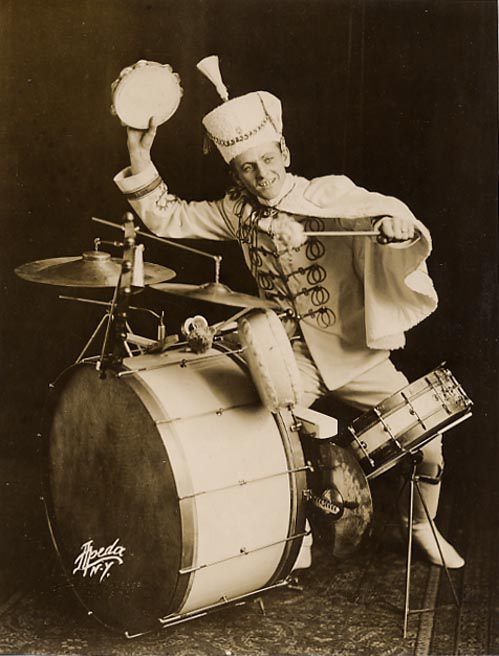My earliest instrument was the drums which I began playing at age 8. Before then, I had a little toy drum kit I got for Christmas but I started to get good on it and so my parents got me a real kit and signed me up for lessons. I hated the lessons but I loved playing and I knew the lessons helped even though I didn't practice the lessons nearly as much as I should have. I didn't get really serious about hunkering down with lessons until I discovered jazz in my teens. I got a set of acrylic Ludwigs with Zildjian crash and ride cymbals and a Paiste China-type. 14-inch hit-hat. I went through snares like a mad man. I used a Rogers dynasonic for a long time but settled down eventually with a Ludwig metal shell. My brother has that drum kit now. I own a set of wood shell Yamahas today with Zildjians again. Metal shell Yamaha snare. I still use that Paiste China-type and now use a 13-inch hi-hat.
I wanted to put a Golden Era drum kit together but never got around to it. It takes some searching although all the pieces are out there. They ain't cheap though.
Here are some factoids about American drum manufacturers:
-Gretsch has been making drums since the 1880s and is the oldest drum company in the U.S. Ludwig & Ludwig started in Chicago about 1911.
-Leedy started in Indianapolis about 1898.
-Slingerland started manufacturing drums in 1928 in Chicago (they made other instruments prior to that) with the Radio King being their premier model starting in 1935.
-In 1929, C.G. Conn of Elkhart, Indiana bought both Leedy and Ludwig & Ludwig and moved them both to Elkhart. A new drum line--Leedy-Ludwig--was formed. Leedy had done business with Ludwig for many years. So did Slingerland.
-When William F. Ludwig insisted on overseeing operations as he had always done for Ludwig & Ludwig, Conn sent him packing back to Chicago to oversee business there but Ludwig knew he was just being gotten rid of and decided there was no point to hanging around. He quit Leedy-Ludwig in the 30s to found his own company but could not use the Ludwig name because Conn owned it so he used his initials instead--W.F.L. Drums out of Chicago--and these drums became quite popular.
-In the 50s, W.F.L. bought back the Ludwig portion of Leedy-Ludwig and moved all the old machinery back to Chicago to be set up next to the new W.F.L. machinery and both companies merged as simply as Ludwig.
And now a Golden Era trap set gallery:
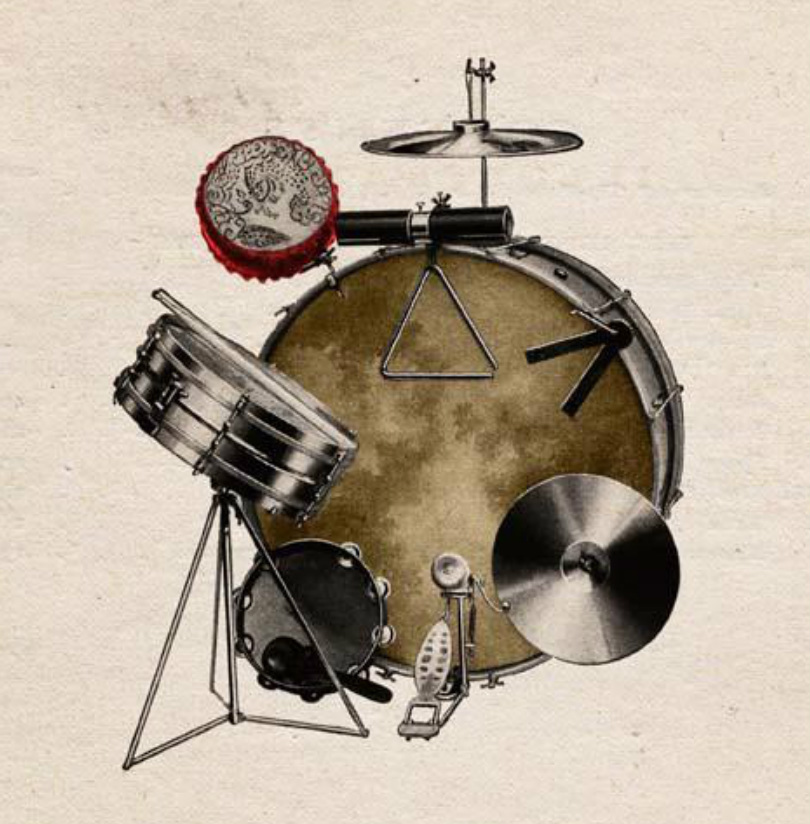
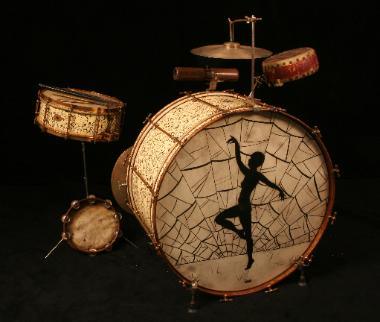
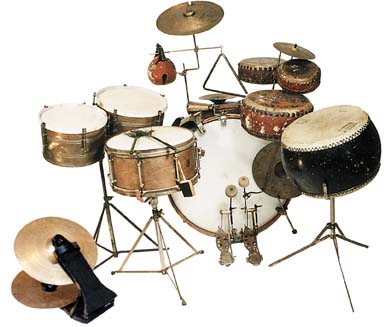

The hi-hat was invented about 1926. But most of the time, they used this sock cymbal that was low to the floor. Before that, it was a cymbal attached to the kick drum, the kick pedal had a little spur on it that impacted against the cymbal with each kick. This was called a clanger and was the forerunner of the hi-hat and sock cymbal (see first image). Drumming was a very different animal at this time. Today, drummers keep time on the hi-hat. You hold the whole beat together by riding the hi-hat but in these early days, things were very different. Drummers then often admitted to having no idea how to use these lo-hat sock cymbals--they just clapped them together whenever they could work it in. The hi-hat today is really the central part of the entire drum kit.
I wanted to put a Golden Era drum kit together but never got around to it. It takes some searching although all the pieces are out there. They ain't cheap though.
Here are some factoids about American drum manufacturers:
-Gretsch has been making drums since the 1880s and is the oldest drum company in the U.S. Ludwig & Ludwig started in Chicago about 1911.
-Leedy started in Indianapolis about 1898.
-Slingerland started manufacturing drums in 1928 in Chicago (they made other instruments prior to that) with the Radio King being their premier model starting in 1935.
-In 1929, C.G. Conn of Elkhart, Indiana bought both Leedy and Ludwig & Ludwig and moved them both to Elkhart. A new drum line--Leedy-Ludwig--was formed. Leedy had done business with Ludwig for many years. So did Slingerland.
-When William F. Ludwig insisted on overseeing operations as he had always done for Ludwig & Ludwig, Conn sent him packing back to Chicago to oversee business there but Ludwig knew he was just being gotten rid of and decided there was no point to hanging around. He quit Leedy-Ludwig in the 30s to found his own company but could not use the Ludwig name because Conn owned it so he used his initials instead--W.F.L. Drums out of Chicago--and these drums became quite popular.
-In the 50s, W.F.L. bought back the Ludwig portion of Leedy-Ludwig and moved all the old machinery back to Chicago to be set up next to the new W.F.L. machinery and both companies merged as simply as Ludwig.
And now a Golden Era trap set gallery:




The hi-hat was invented about 1926. But most of the time, they used this sock cymbal that was low to the floor. Before that, it was a cymbal attached to the kick drum, the kick pedal had a little spur on it that impacted against the cymbal with each kick. This was called a clanger and was the forerunner of the hi-hat and sock cymbal (see first image). Drumming was a very different animal at this time. Today, drummers keep time on the hi-hat. You hold the whole beat together by riding the hi-hat but in these early days, things were very different. Drummers then often admitted to having no idea how to use these lo-hat sock cymbals--they just clapped them together whenever they could work it in. The hi-hat today is really the central part of the entire drum kit.
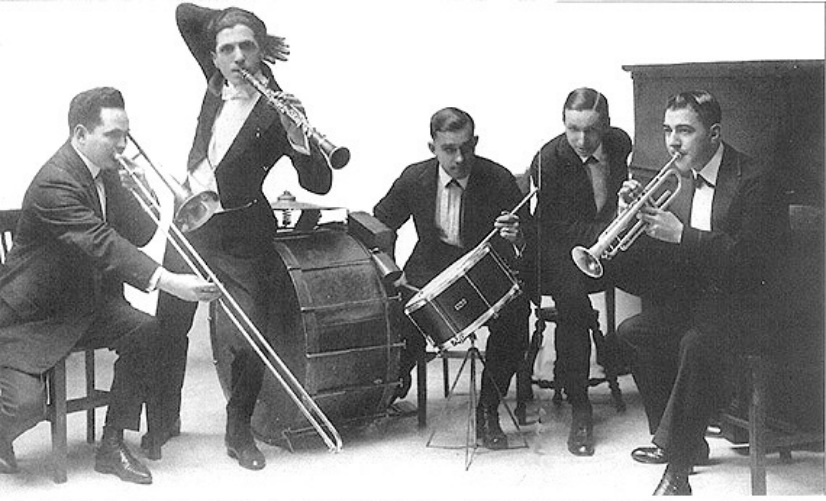
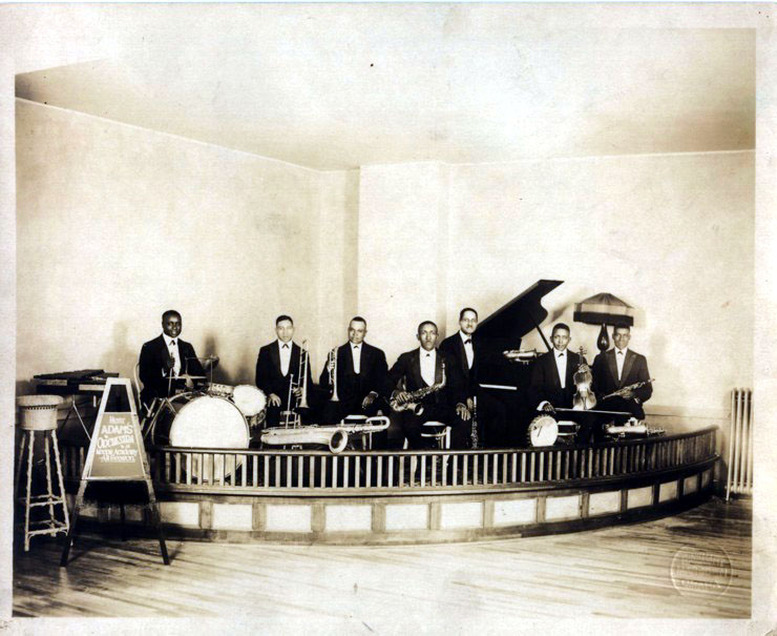
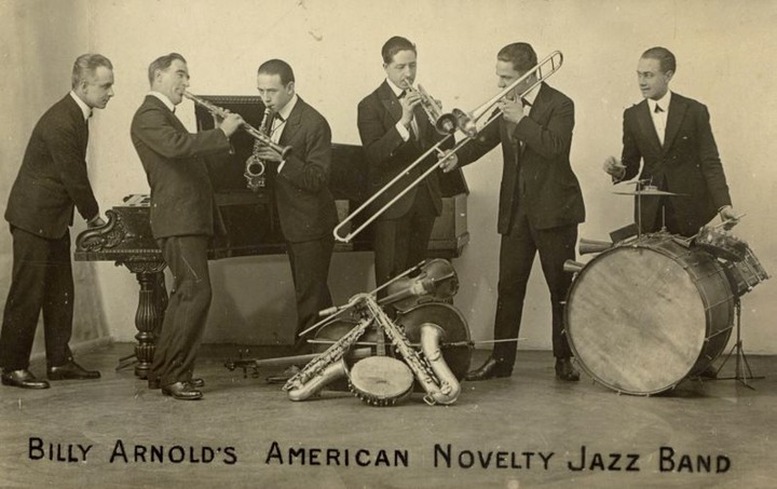
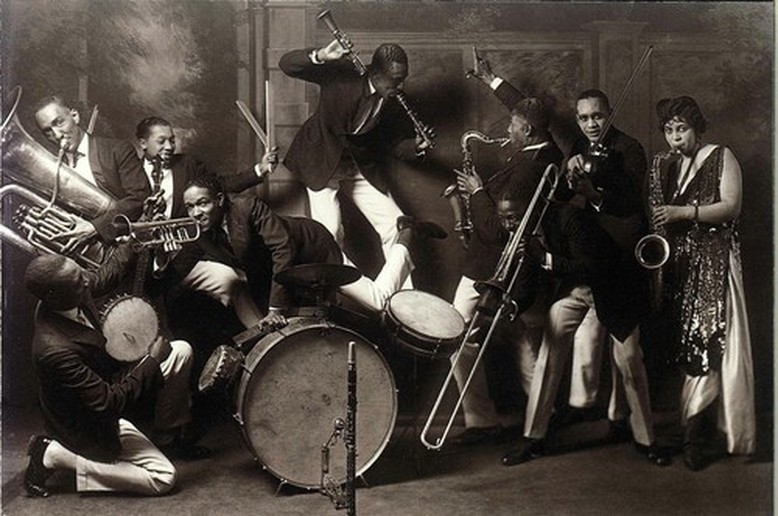



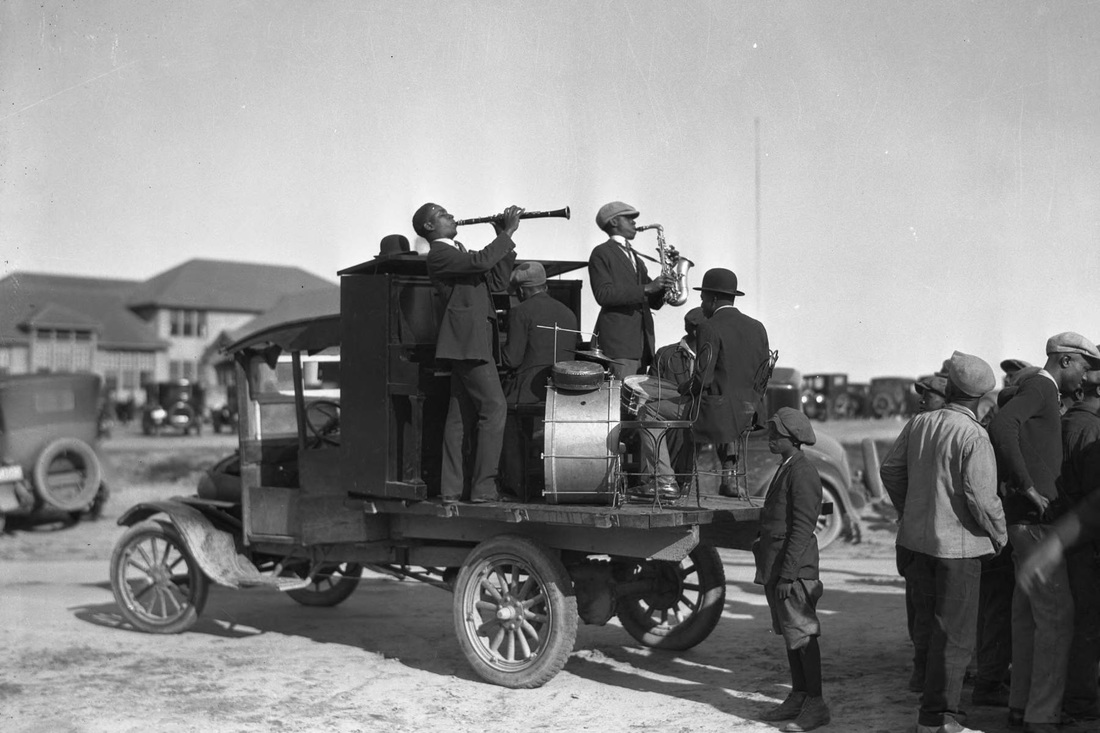
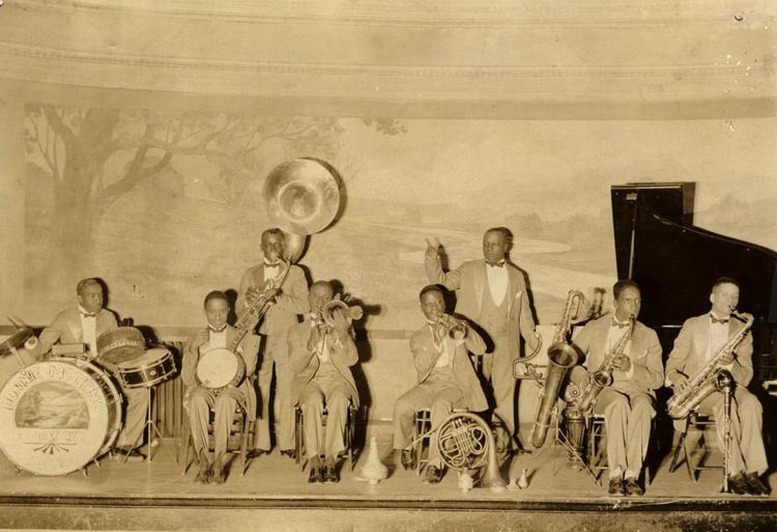
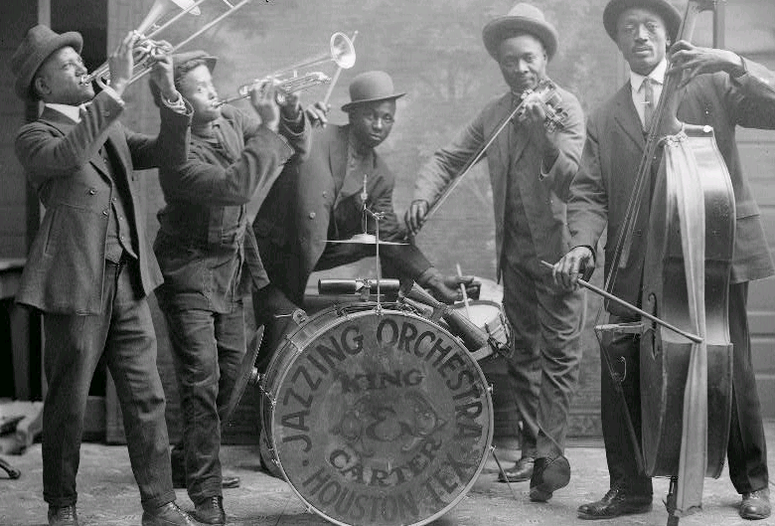


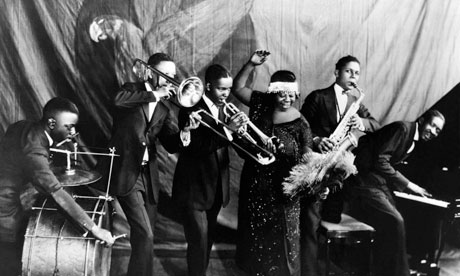

.jpg](http://www.littleangelsmurals.co.uk/USERIMAGES/1929_Ludwig_Ludwig_Peacock_Pearl_set_front-378x322[1](1).jpg)
